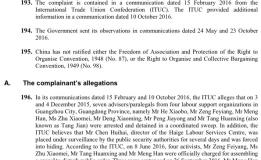

About 20 workers occupied a clothes store in Suzhou on 25 October when it became clear the boss was planning to close the business.
The saleswomen had worked at the Qianjiahui Apparel Emporium for a month but had never been paid. When several movers arrived at the store and packed up all the merchandise, the workers were spurred into action and occupied the premises for a whole day and night.
Workers then took their case to the local labour inspectorate who called the boss in for mediation. The boss retaliated by firing all the workers. Though none had signed labour contracts, they received all their back pay, overtime, and additional compensation for being dismissed without one month’s notice, as required by Chinese labour law.
